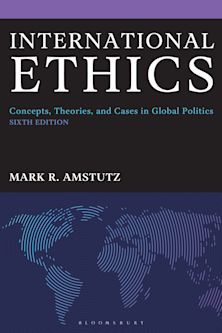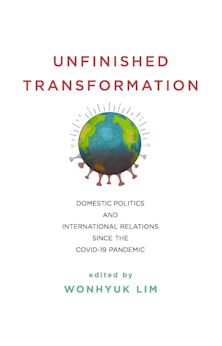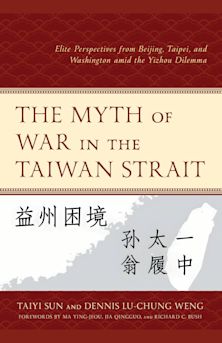- Home
- ACADEMIC
- Politics & International Relations
- Introduction to International Relations
- The Price of Peace
The Price of Peace
Incentives and International Conflict Prevention
David Cortright (Anthology Editor) , Nicole Ball (Contributor) , Virginia I. Foran (Contributor) , Jordana D. Friedman (Contributor) , Jeffrey Herbst (Contributor) , Heather F. Hurlburt (Contributor) , William J. Long (Contributor) , Amitabh Mattoo (Contributor) , Caleb S. Rossiter (Contributor) , Scott Snyder (Contributor) , Leonard S. Spector (Contributor) , Geoff Thale (Contributor) , Raimo Väyrynen (Contributor) , David A. Hamburg (Foreword) , Cyrus R. Vance Jr. (Foreword)
The Price of Peace
Incentives and International Conflict Prevention
David Cortright (Anthology Editor) , Nicole Ball (Contributor) , Virginia I. Foran (Contributor) , Jordana D. Friedman (Contributor) , Jeffrey Herbst (Contributor) , Heather F. Hurlburt (Contributor) , William J. Long (Contributor) , Amitabh Mattoo (Contributor) , Caleb S. Rossiter (Contributor) , Scott Snyder (Contributor) , Leonard S. Spector (Contributor) , Geoff Thale (Contributor) , Raimo Väyrynen (Contributor) , David A. Hamburg (Foreword) , Cyrus R. Vance Jr. (Foreword)
This product is usually dispatched within 2-4 weeks
- Delivery and returns info
-
Flat rate of $10.00 for shipping anywhere in Australia
You must sign in to add this item to your wishlist. Please sign in or create an account
Description
Carrots and sticks have always been used in combination in diplomatic affairs, but scholars and policymakers have focused more on the sticks than the carrots. In this provocative study, policy-savvy scholars examine a wide range of cases-from North Korea to South Africa to El Salvador and Bosnia-to demonstrate the power of incentives to deter nuclear proliferation, prevent armed conflict, defend civil and human rights, and rebuild war-torn societies. The book addresses the 'moral hazard' of incentives, the danger that they can be construed as bribes, concessions, or appeasement. Incentives can take many forms-economic and political, as palpable as fuel oil and as intangible, yet powerful, as diplomatic recognition and 'constructive engagement.' The cases demonstrate that incentives can sometimes succeed when traditional methods-threats, sanctions, or force-fail or are too dangerous to apply.
Table of Contents
Part 2 Overview
Chapter 3 Incentives and Cooperation in International Affairs
Chapter 4 Preventing Weapons Proliferation
Chapter 5 The Application of Incentives to Nuclear Proliferation
Chapter 6 North Korea's Nuclear Program: The Role of Incentives in Preventing Deadly Conflict
Chapter 7 Trade and Technology Incentives and Bilateral Cooperation
Part 8 Regional Conflict Resolution
Chapter 9 Carrots and Cooperation: Incentives for Conflict Prevention in South Asia
Chapter 10 Economic Incentives and the Bosnian Peace Process
Chapter 11 Incentives and the Salvadoran Peace Process
Chapter 12 Incentives and Domestic Reform in South Africa
Part 13 Multilateral Application
Chapter 14 Gaining Leverage for International Organizations: Incentives and Baltic-Russian Relations, 1992-1994
Chapter 15 The Role of International Financial Institutions in Preventing and Resolving Conflict
Part 16 Conclusions and Lessons Learned
Chapter 17 Inducement Strategies for Preventing Conflict
Product details
| Published | 20 Nov 1997 |
|---|---|
| Format | Paperback |
| Edition | 1st |
| Extent | 362 |
| ISBN | 9780847685578 |
| Imprint | Rowman & Littlefield Publishers |
| Dimensions | 227 x 149 mm |
| Series | Carnegie Commission on Preventing Deadly Conflict |
| Publisher | Bloomsbury Publishing |
About the contributors
Reviews
-
The focus of this lucidly written and cogently argued edited volume is on the use of incentives in international conflict prevention and resolution. Through case studies, the contributors convincingly demonstrate how political and economic incentives have resulted in the successful resolution of some of the most intractable international conflict of recent decades. . . . This well-informed and sober book is highly recommended for upper-division undergraduate and graduate students, scholars, and practitioners of international relations and diplomacy.
N. Entessar, Choice Reviews
-
The contributions to the volume nicely demonstrate that the effectiveness of incentives is likely to vary, depending on the particular circumstances in which they are applied. . . . Policy makers will benefit from some of the insights generated by the array of case studies.
Dan Reiter, Emory University, Ethnic Conflict Research Digest
-
This is the seminal book on incentives in foreign policy that has been long overdue. The Price of Peace is an important book and well conceived. It is very strong in developing discussions about incentives on which policy recommendations and analysis can be based. The case studies have been thoughtfully chosen to give a realistic assessment of the impact of incentives, and the concluding chapter is a tour de force that summarizes well the current state of knowledge on incentives and rightly suggests that they can become more powerful instruments of foreign policy in the global community.
I. William Zartman, The Paul H. Nitze School of Advanced International Studies, Johns Hopkins University
-
The many excellent case studies in this volume demonstrate that positive inducements of an economic, political, or security character can often be effective in deterring nuclear proliferation, preventing armed conflict, and defending civil and human rights. The study fills an important gap in the scholarly literature. It offers significant help and encouragement to policymakers who must increasingly turn to positive incentive strategies in the post-Cold War era instead of relying on economic coercion and military force, options which are often no longer available or effective.
Alexander L. George, Stanford University



































